Home / 03. Policy Framework / Goal 1: 10-Minute Neighborhoods
Plan Policy
Table of contents
Goal 1: 10-Minute Neighborhoods

Goal 1: 10-Minute Neighborhoods

All Charlotte households should have access to essential amenities, goods, and services within a comfortable, tree-shaded 10-minute walk, bike, or transit trip by 2040. Not all neighborhoods are expected to include every essential amenity, good, or service, but every resident should have access within a ½ mile walk or a 2-mile bike or transit trip.
Objectives
Increase the percentage of households, both new and existing, within a comfortable, tree-shaded 10-minute walk, bike, or transit trip of the following services and amenities:
- Fresh, healthy food opportunities.
- High performance transit station. (cross-reference: Goal 7)
- Park, plaza, nature preserve, or other public space. (cross-reference: Goal 6)
- Trail, greenway, or other “all ages and abilities (AAA)” bicycle facility. (cross-reference: Goal 4, Goal 5)
- A concentration of daily goods and services (applies to Neighborhood, Community, and Regional Activity Center).
- Non-emergency health care services or pharmacy. (cross-reference: Goal 6)
Community facilities (libraries, schools, senior centers, community centers, early childhood education, etc.). - Financial services (banks or credit unions).
- Family sustaining wage jobs. (cross-reference: Goal 8)
- Advanced technology delivery service and supportive digital access.
Note: Transit is both a means of access and an essential service and thus is addressed in both the Goal and Objective 1b.
Big Policy Ideas
- Develop a robust network of food co-operatives (co-ops), community gardens, and neighborhood-based food sharing networks.
- Create a culture of developer-community collaboration through Community Benefit Agreements.
- Encourage higher density, walkable, mixed-use development in and near Activity Centers and transit stations, and allow development bonuses for projects that include benefits to the community (applies to Regional Activity Center, Community Activity Center, Neighborhood Center, and Campus). (cross-reference: Goal 4, Goal 5, Goal 6, Goal 8)
- Support the evolution of existing underserved neighborhoods which are not proximate to services or lack facilities such as sidewalks and street trees, into complete neighborhoods by implementing regulatory changes that encourage desired residential and commercial redevelopment and infill development. Example regulatory changes include allowing the continued use of neighborhood commercial establishments (applies to Neighborhood 1 and Neighborhood 2), permitting small-scale neighborhood commercial and office uses (applies to Neighborhood Center and Neighborhood 2), reducing or eliminating parking requirements, ensuring mobility infrastructure provides adequate space for street trees, and increasing shared parking allowances. (cross-reference: Goal 1, Goal 6, Goal 10)
- Implement complete neighborhood policies that encourage mixes of different types of uses, depending on the development’s context (applies to Neighborhood Center, Neighborhood 1, and Neighborhood 2).
- Support the development of neighborhoods with increased accessibility via multiple transportation modes to a variety of destinations, through regulatory changes such as refinements to block-length and connectivity standards and by permitting neighborhood-supportive commercial development in appropriate locations adjacent to residential neighborhoods.
- Use Community Benefit Agreements or other incentives, to encourage housing developments that include childcare facilities or that provide funding for such facilities.
- Integrate existing and emerging technologies and future innovations in planning, policy, and infrastructure investments to facilitate delivery of goods and services directly to residents and businesses.
- Continue to undertake and expand inclusive neighborhood planning processes, particularly in underserved communities, to incorporate plans for improved connectivity; prioritize public investments such as bicycle facilities, sidewalks, transit stops, and parks; and identify appropriate locations for food opportunities, shopping, and community facilities. (cross-reference: Goal 3 and Goal 5)
- In collaboration with the County, prioritize investment in public gathering areas, plazas, parks, tree-shaded greenways, and shared-use paths in parts of the City and County that lack such facilities, and fill pedestrian and bicycle infrastructure gaps in areas near schools, parks, greenways, Activity Centers, and community facilities.
- Require an increased level of investment in adjacent neighborhoods when large projects with public funding are implemented nearby.
- Through the implementation of the Tree Canopy Action Plan, ensure adequate structures, systems (large tree wells or planting strips, structural soil or suspended pavement systems, etc.) and resources for maintenance are provided to support large healthy tree canopy along streets that will shade pedestrians and provide public benefit. (cross-reference: Goal 7)
- Support urban farming and accessibility to fresh food opportunities (public and private community gardens, farmers markets, co-ops, neighborhood-based CSAs, etc.) especially within communities that currently lack 10-minute access to healthy food sources. See Public and Private Foodscaping on this page for more information. (cross-reference: Goal 6)
- In collaboration with Mecklenburg County Health and Human Services, support development of neighborhood health clinics, particularly within communities that lack 10-minute access to health services. Use My Community Resource Center (CRC) Connection Tool app data to identify critical areas in need of health clinics. (cross-reference: Goal 6)
- Develop strategies, potentially including financial incentives or through Community Benefit Agreements, to encourage inclusion of full-service grocery stores in new mixed-use development and within areas in the city that are deemed to be food deserts where healthy produce and meats are not available. (cross-reference: Goal 6)
- Continue to require the development of private spaces that are open to the public, such as plazas, preserves, and walking paths. Broaden the types of spaces that qualify through revisions to development regulations and other City regulations.
- Encourage walkable neighborhood-oriented mixed-use development and neighborhood commercial establishments adjacent to and at intersections of major thoroughfares within neighborhoods.
- Invest in programs that address cultural and language barriers that may hinder access to essential amenities, goods, and services.
- In collaboration with the County, expand access to childcare and pre-K programs, prioritizing support for programs serving neighborhoods that are currently lacking these facilities.
- Encourage local, community-based banks and credit unions to support residents and businesses within neighborhoods that have limited access to traditional banks.
- Coordinate with neighborhood and other grassroots organizations during the planning and review of neighborhood infill development projects to ensure that these developments provide benefits to the community.
- Ensure the implementation of 10-minute neighborhood development policies align with the Stormwater Master Plan, promote the health of stormwater features (creeks, wetlands, stream buffers, floodplains, and drainage infrastructure), and maintain stormwater management objectives. (cross-reference: Goal 7)
Recommended Projects and Programs
- Increase and expand tree-shaded pedestrian and bicycle network density and connectivity. Identify and fill gaps in the pedestrian and bicycle network within ½ mile of: parks, public open space, trails, and greenways; Activity Centers; high-performance transit stations; and low-cost health care, pharmacies, community facilities, and banks.
- Implement new community green spaces, including tree plantings and surface water and stormwater facilities, on vacant and underutilized parcels, especially in neighborhoods with deficient access to parks and open space. Provide a framework for communities to program and activate these new public spaces.
- Work with property owners to implement community gardens, food forests, and farmers’ markets on vacant parcels in neighborhoods with deficient access to healthy food opportunities. See Public and Private Foodscaping sidebar on page 72 for more information on creative and emerging food urban agriculture opportunities.
- Continue to implement and evaluate development standards for block length, street trees, street connectivity requirements, and required connections to existing on-street and off-street pedestrian and bicycle facilities and trails.
- Provide information and resources to communities planning for and launching food co-ops, food forests, community gardens, and other public and private foodscaping opportunities.
- Provide information and resources to support flexible and innovative approaches for finding and combining funds from various sources, in partnership with community-based early childhood education programs.
- Provide information and resources, particularly about funding options, to neighborhood organizations and local groups to help support new and existing community centers.
- Partner with credit unions and/or other financial institutions to develop a program to deliver financial services and financial literacy educational programs to neighborhoods that lack local access.
- Increase public investment in neighborhood health clinics.
- Establish an Infrastructure Advisory Council to assist in the assessment of infrastructure throughout the city and develop strategies that balance equitable investments in areas most in need, including areas with absent and insufficient facilities, areas growing fastest, and areas targeted for growth.
- Establish a Community Benefits Coalition to further study and champion Community Benefits.
- Work with the Community Benefits Coalition to develop a menu or playbook of benefits to the community that may be supported with incentives or Community Benefits Agreements if included or addressed within development projects. Align desired benefits with the type of incentive (e.g. regulatory vs. financial). Utilize direction from the Plan and subsequent small area plans to develop priority ranking of desired benefits to seek through incentives.
- Explore and implement a program that provides an opportunity for neighborhood organizations to work with developers to create desired benefits to the community through a partnership or agreement.
- Coordinate with CDOT, CATS and the larger CIP process to prioritize implementation of pedestrian, bicycle and transit projects in neighborhoods that have proximity to essential amenities, goods and services, but poor transportation access.
- Coordinate with Housing and Neighborhood services to explore the establishment of Voluntary Agricultural Districts to foster the growth, development and sustainability of family farms.
Image source: https://www.bloomberg.com/news/articles/ 2019-01-21/a-black-owned-food-co-op-grows-in-detroit

The Detroit People’s Food Co-Op has positively impacted residents in Detroit’s historic North End, predominately those in the African American community and the low and moderate-income population. This full-service grocery store is open to the public and cooperatively owned by members of the community. The co-op created more than 20 jobs for residents and improved access to fresh food, educated the community about nutrition, and supported local businesses. The City assisted in community engagement and organization, as well as in helping to identify and orchestrate a multi-source funding strategy.
Detroit passed a CBO in 2016 that requires developers to proactively engage with the community to identify benefits that can offset negative impacts of the project. The CBO requires developments with a private investment of $75 million or more and a subsidy or tax abatement from the City valued at more than $1 million to execute an agreement with a Neighborhood Advisory Council (NAC). An NAC is created for every qualifying project made up of residents of the impact area and appointees selected by the Planning Department and City Council.
